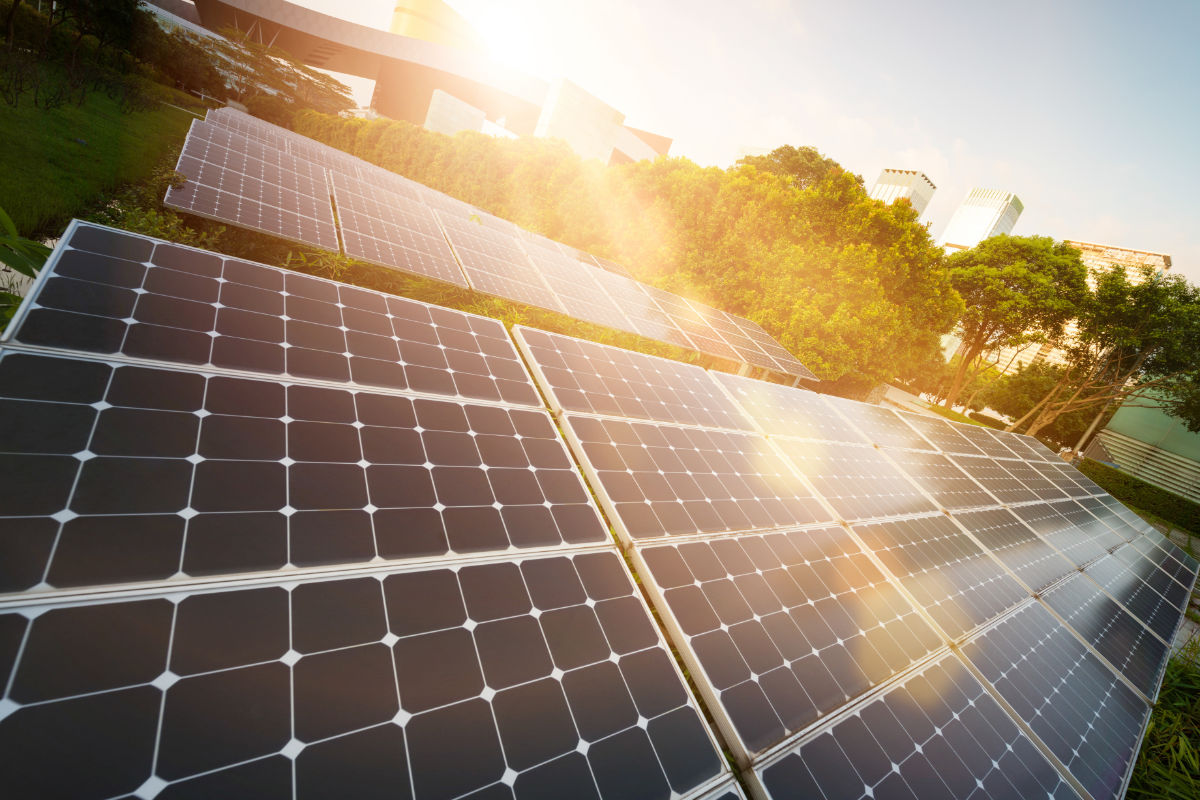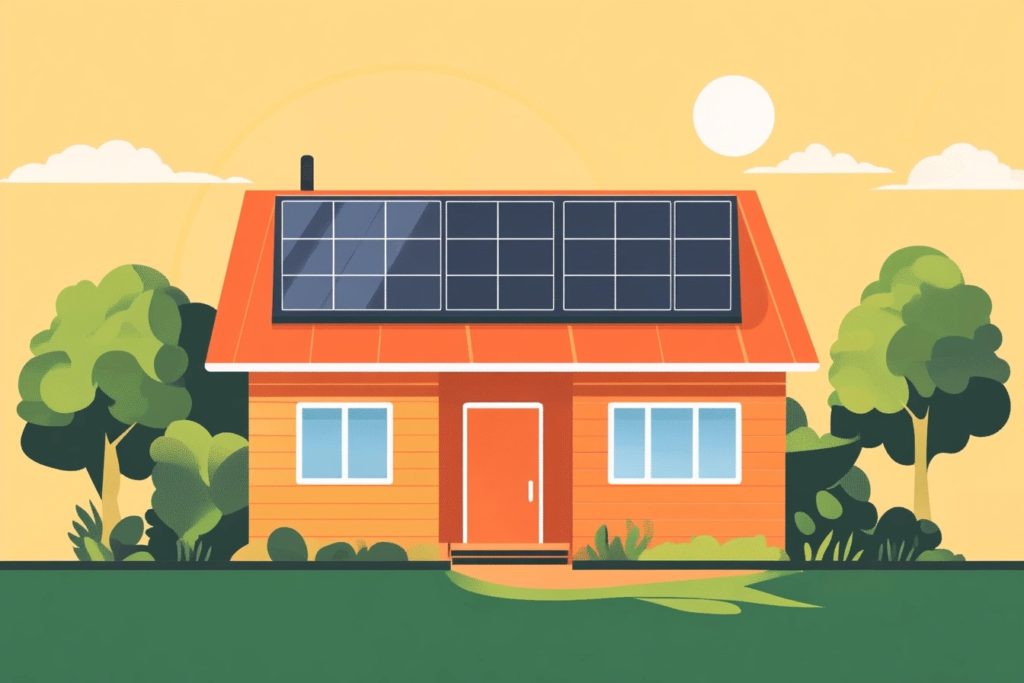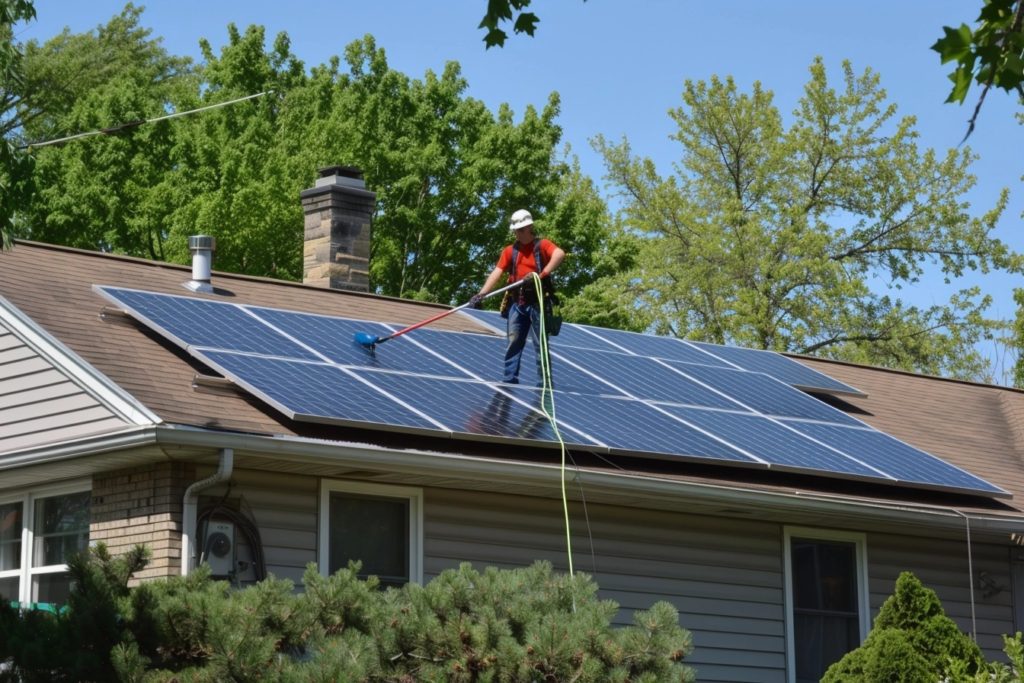
How efficient are solar panels: the short answer
Different solar panel types come with different efficiency ratings, but most modern options fall anywhere between 13 and just about 25%.
Of course, the higher the efficiency rating, the higher the price tag as well. So, the goal is to just get the most efficient solar panel type for your budget instead of just shooting for the most efficient one out of all available options.
But what exactly are the options available to you? Let’s take a look at the most common ones:
Monocrystalline solar panels
Boasting an efficiency rating of around 20%—thanks to being manufactured using a single piece of pure silicon—monocrystalline solar panels are one of the most efficient options you have today.
But that’s not all they’re known for. They’re also highly regarded for their superior durability, making them perfect for homes located in areas with harsh weather conditions.
Unfortunately, these benefits all come at a price—literally. You see, monocrystalline panels are more expensive than most other options primarily because they are made using a single piece of pure silicon. Given the way they are manufactured, up to 50% of each silicon crystal used ends up wasted.
Polycrystalline solar panels
Slightly less efficient than their monocrystalline panels at about 15-17%, polycrystalline solar panels are perfect for you if you’re looking for a less expensive yet equally durable option.
These panels are manufactured using the exact same material as monocrystalline ones. The only difference is that instead of being made with just one crystal, they’re made using several cut up pieces. This means significantly less crystal gets wasted during manufacturing, which is exactly why they don’t cost as much.
PERC solar panels
Short for passive emitter and rear cell, PERC solar panels are pretty much the same as monocrystalline and polycrystalline ones in terms of the primary material used. The biggest difference is that they have an extra passivation layer behind their main cell, which does three simple things:
- Reflect sunlight back to the main cell, increasing the total amount that gets absorbed by the panel
- Resist the natural propensity of electrons to regroup, allowing them to flow more freely in the system
- Allow each panel to absorb higher wavelengths of light, preventing the back sheet from heating up and the panel’s efficiency from going down
The result is about a 5% increase in the overall efficiency of each panel—but that’s not all PERC panels have going for them. Aside from their top-notch efficiency, they’re also smaller than most other solar panel types, making them great for homes with limited roof space.
And, to top it all off, they also don’t cost significantly more than monocrystalline panels to produce, so they also generally don’t cost significantly more to acquire. So, if you’re already looking at getting the former, then you might want to consider spending just a little more to upgrade to the latter.
Thin-film solar panels
If you’re willing to sacrifice efficiency to save money, then thin-film solar panels may be the option for you. With an efficiency rating of just 13-15%, they’re the least efficient one out of the four solar panel types we’ve talked about today.
Is there a way to increase the efficiency of my solar panels?
Unfortunately, no, there’s no way to increase the efficiency of your solar panels. What you can do, however, is keep them working at peak efficiency for a long, long time.
First, you need to make sure that your home is solar ready. As a general rule, it should have a south-facing roof that slopes anywhere between 15 and 40 degrees and has unobstructed access to direct sunlight. In addition, the roof surface itself must be big enough to accommodate enough solar panels to generate the amount of power your household requires.
Second, you need to make sure that your solar power system is properly installed and set up. This means that unless you’re a certified expert when it comes to solar installations, it’s better to let a professional take care of it for you.
Finally, you need to make sure that your solar panels are not covered in leaves, snow, and other forms of debris, so be sure to clean them from time to time. And, if you spot signs of damage, get in touch with your solar provider immediately so they can fix the problem before it gets worse.
Given that most modern solar panels are designed to work at peak capacity for at least 25 years, if you have yours properly installed and keep them well maintained, you should be able to enjoy a healthy return on your investment.
Is efficiency rating everything?
The short answer is no, efficiency rating is not necessarily the be-all and end-all when it comes to choosing what type of solar panel to invest in.
While it may seem like going for the option with the highest efficiency rating is a great idea, there are actually several other factors you need to consider to ensure you get the right solar panel type for your specific needs and situation, such as:
- Your budget
- The size and condition of your roof
- The location of your property
- Your total power requirement
Let’s take a closer look at each one:
The first consideration is how much you have to spend on a solar power system. Even if you wanted to get the most efficient option, if you need to burn through your life savings to do so, then it might not be the best decision. Keep in mind that it takes time for solar energy systems to pay for themselves and become an actual asset.
Second, the size and condition of your roof would also dictate the type of solar panel you can use. There’s no point in going for the most efficient option if your roof is not big or strong enough to house it.
Third, you also need to consider your home address. if your property is located in an area that’s constantly exposed to harsh weather conditions, then you’ll also need to strike a balance between efficiency and durability when it comes to choosing the type of solar panel to use.
Finally, you need to remember that there’s more than one way to ensure your solar system meets your home’s power requirement. The goal is to find the most cost-effective setup that would last a long, long time—which doesn’t always require the use of the most efficient solar panels available in the market.
Long story short, if you want to make sure you get the perfect solar power system for your home, it’s best to hire an expert to not only help you choose, but also take care of installation, set up, and maintenance for you.
Is there a way to make switching to solar more financially feasible?
Absolutely! In fact, there are several ways for you to either significantly reduce or completely eliminate the upfront costs associated with switching to solar. Let’s take a look at the three most popular ones: solar loan, solar lease, and solar PPA.
Solar loans are just like any other kind of loan. They allow you to purchase your solar system without having to pay up front. Instead, you pay a significantly smaller monthly fee until the total cost of the system is paid off.
If you get your solar loan through LGCY Power, you’ll get access to benefits such as:
- Monthly payments lower than your energy bill
- System maintenance
- Product and workmanship warranty
- Federal solar tax credit and other government incentives
A solar lease, on the other hand, works pretty much the same way, taking the upfront cost of switching to solar out of the equation. The only difference is that if you choose this option, you won’t actually get to own the system. In fact, even the benefits are exactly the same when you get one from LGCY Power.
The third and final option we’ll be taking a look at today is solar PPA (power purchase agreement).
Unlike the first two options where you either pay in installments for the system or pay to borrow one, a solar PPA completely eliminates the need for you to purchase or lease a system. Instead, the solar company retains ownership of the system and you just pay for the amount of power you use—which typically costs less than what your utility company is charging you now.
The advantage of going with this setup is that you get to enjoy clean, affordable energy without having to worry about things such as depreciation and maintenance.
At the end of the day, it all depends on your needs.
If you prefer to have your own solar power system but don’t have the cash to pay for it up front, then a solar loan is your best bet.
If you just want a system installed but don’t mind not actually owning it, then a solar lease would be better for you. This option not only eliminates the need to pay for the system up front just like a solar loan, it also takes depreciation out of the equation just like a solar PPA.
Finally, if you just want more affordable energy but don’t want (or are unable) to install a solar power system in your home, then a solar PPA is exactly what you need.
What’s next?
Again, if you want to make sure you get the right solar power system for your home, the first step is to talk to a solar power specialist who can take care of not only helping you choose the correct system, but also installing, setting up, and maintaining it.
Book a no-obligation free consultation with one of our solar panel consultants today so we can answer all your questions and guide you every step of the way.




